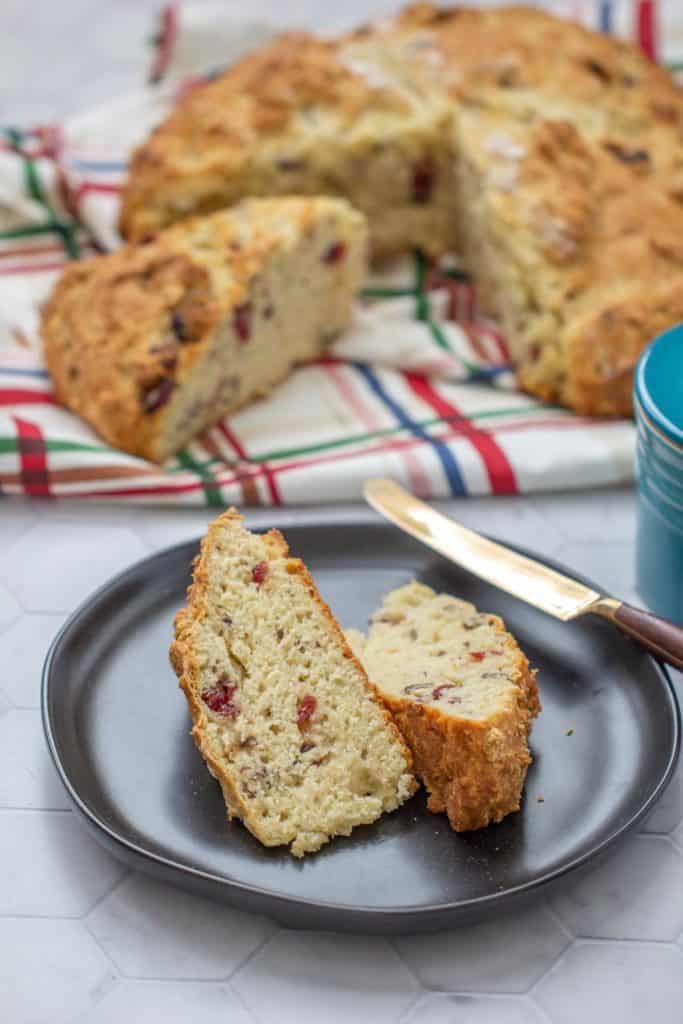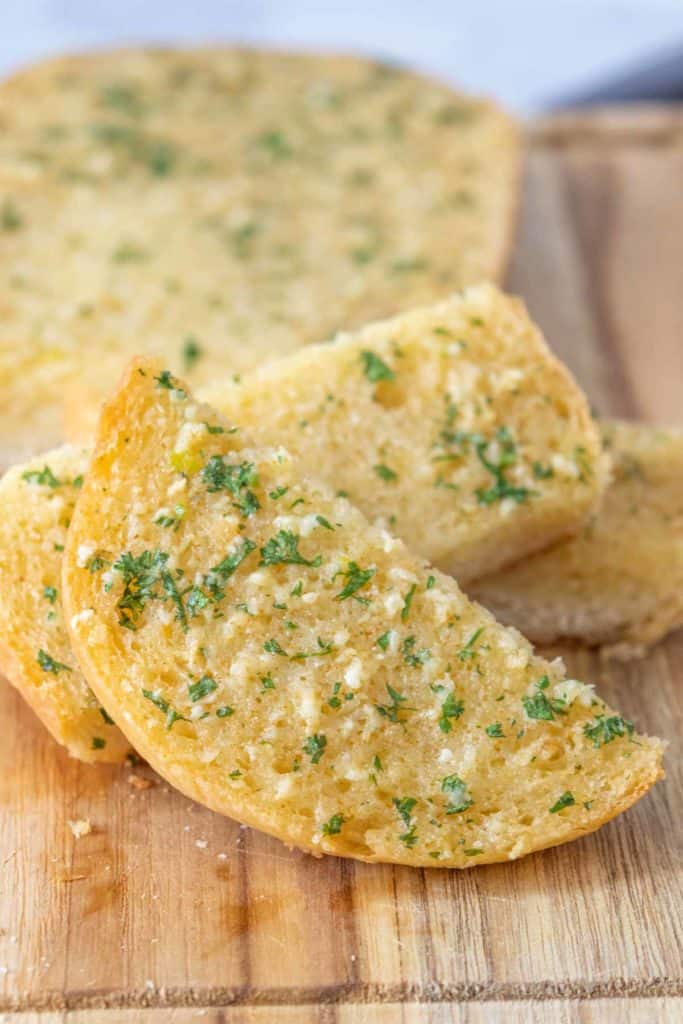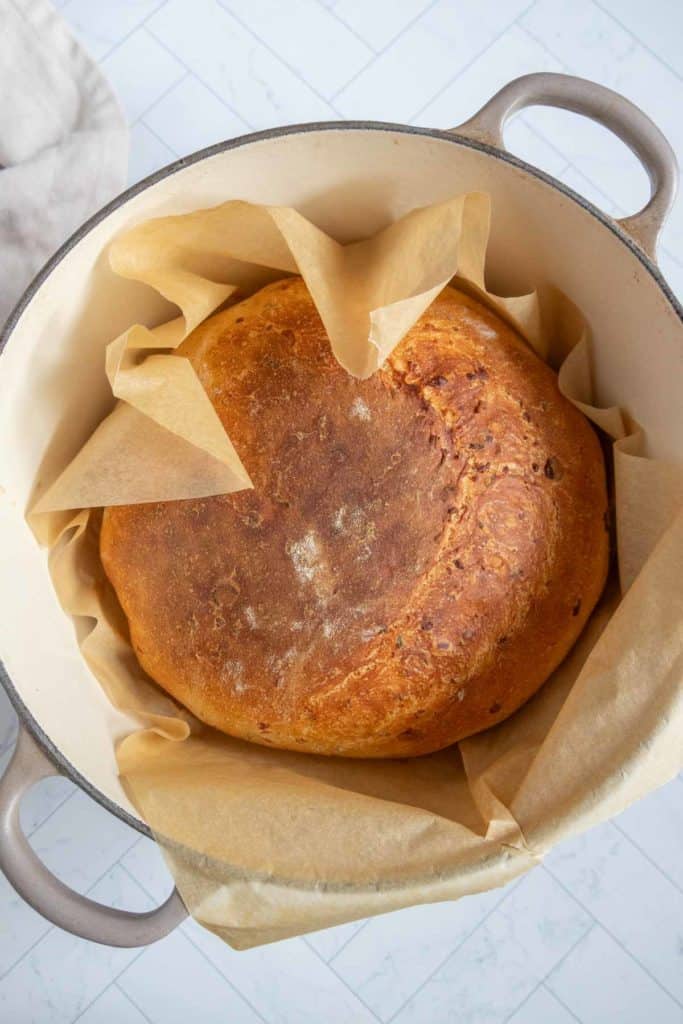This post contains affiliate links and may earn commissions on recommended products. As an Amazon Associate, I earn from qualifying purchases.
Soft and fluffy homemade French bread is easy to make at home! Enjoy it with butter, sliced for sandwiches, or made into French bread pizza!
Over the years of creating in the kitchen I’ve learned that there is one thing my family loves more than anything else.
Surprisingly it’s not cookies or cakes or even chocolate ice cream, but rather a fresh, warm-from-the-oven loaf of homemade bread.
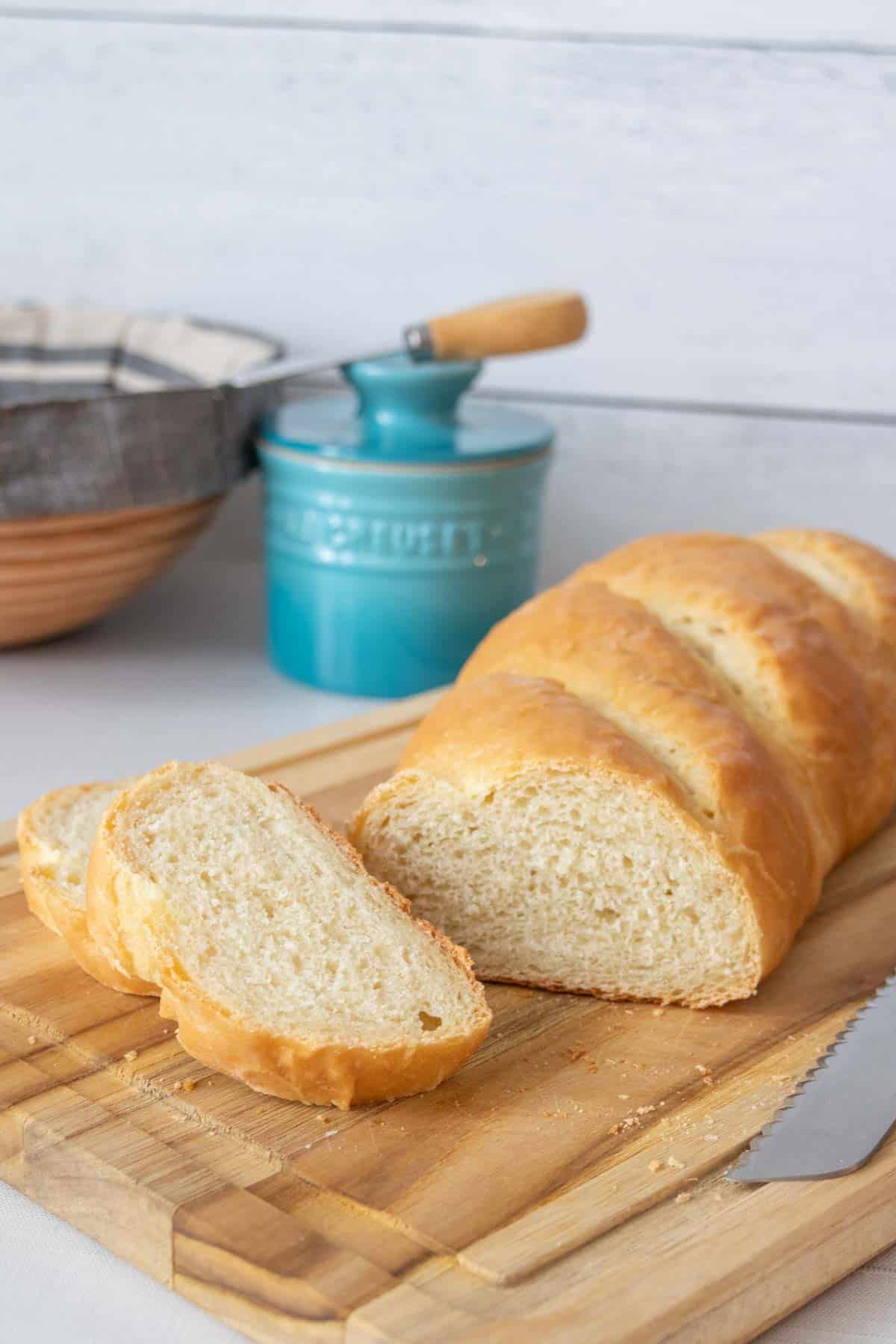
I happen to agree, so I try to make bread multiple times a month, whether it’s my honey oatmeal sandwich bread or this simple French bread.
This recipe makes two loaves of bread — one for devouring immediately, and one for using how you like later.
What is French bread?
While it might be a bit confusing, French bread and baguettes are not the same thing. Baguettes are a kind of French bread, but not the particular loaf we are talking about here.
Baguettes are longer and thinner, with a crisp exterior and more open crumb (that is, lots of airy holes).
French bread loaves are shorter and wider than baguettes, but not as short and wide as Italian bread loaves.
They have a more tight crumb and a softer exterior than baguettes or other artisan-style breads.
You can commonly find French bread loaves at supermarkets in the U.S.
Ingredients for French bread
One reason I love making bread is that you only need a few ingredients to make it.
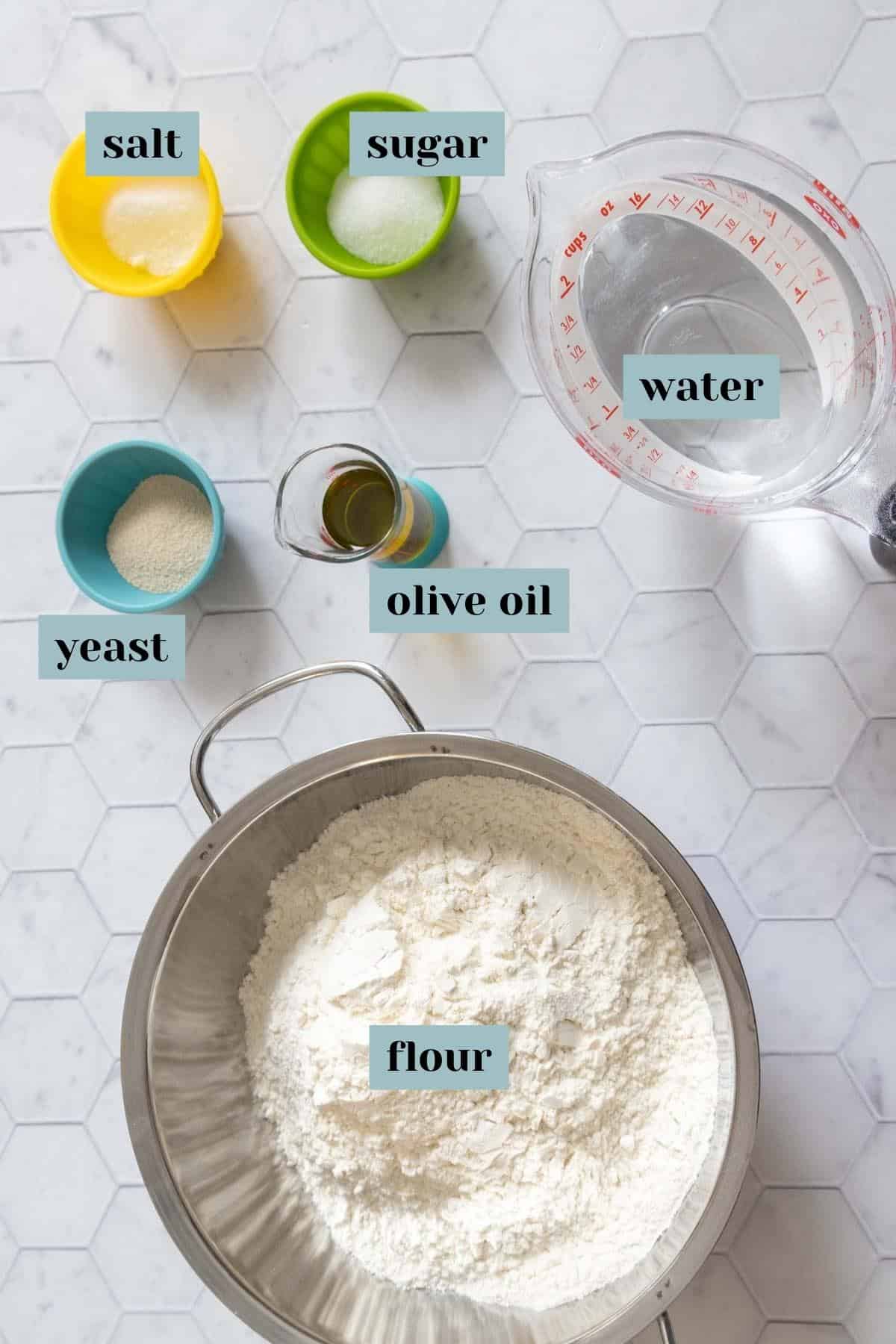
Flour – I use all-purpose flour for this bread.
I have not tried using gluten-free substitutes or whole wheat flours for this recipe. If you make any substitutions, please let me know how it goes!
Yeast – You’ll need yeast to rise the bread. This recipe calls for 2 tablespoons, which is more than is in a single packet.
If you bake often, I recommend buying a jar or larger size of yeast. I store my yeast in a sealed container in the freezer to keep it as fresh as possible.
This recipe uses instant yeast. If you want to use active dry yeast, make sure to mix the yeast with the warm water and let it sit for 5 minutes, until frothy, before adding to the dough.
Salt and sugar – For flavor and to assist with the rise.
Oil – I use olive oil, but you can also use canola oil, or other neutral-tasting oil.
Warm water – Water for bread needs to be warm, but not hot. It should measure about 100 degrees, or just slightly warm when tested on the inside of your wrist.
How to make French bread
In a large bowl or the bowl of a stand mixer with a dough hook, combine 3 cups of the flour, salt, sugar, and instant yeast.
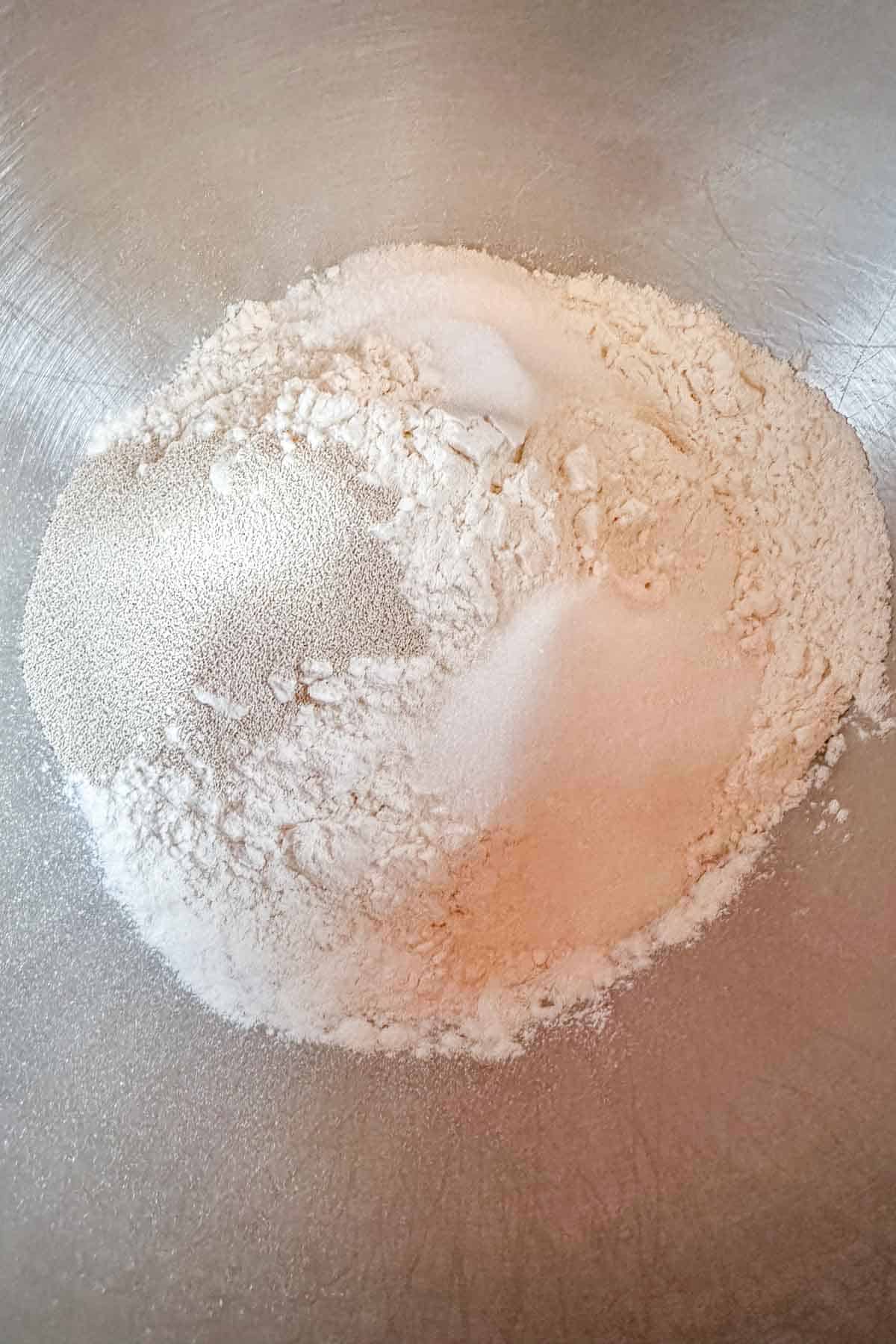
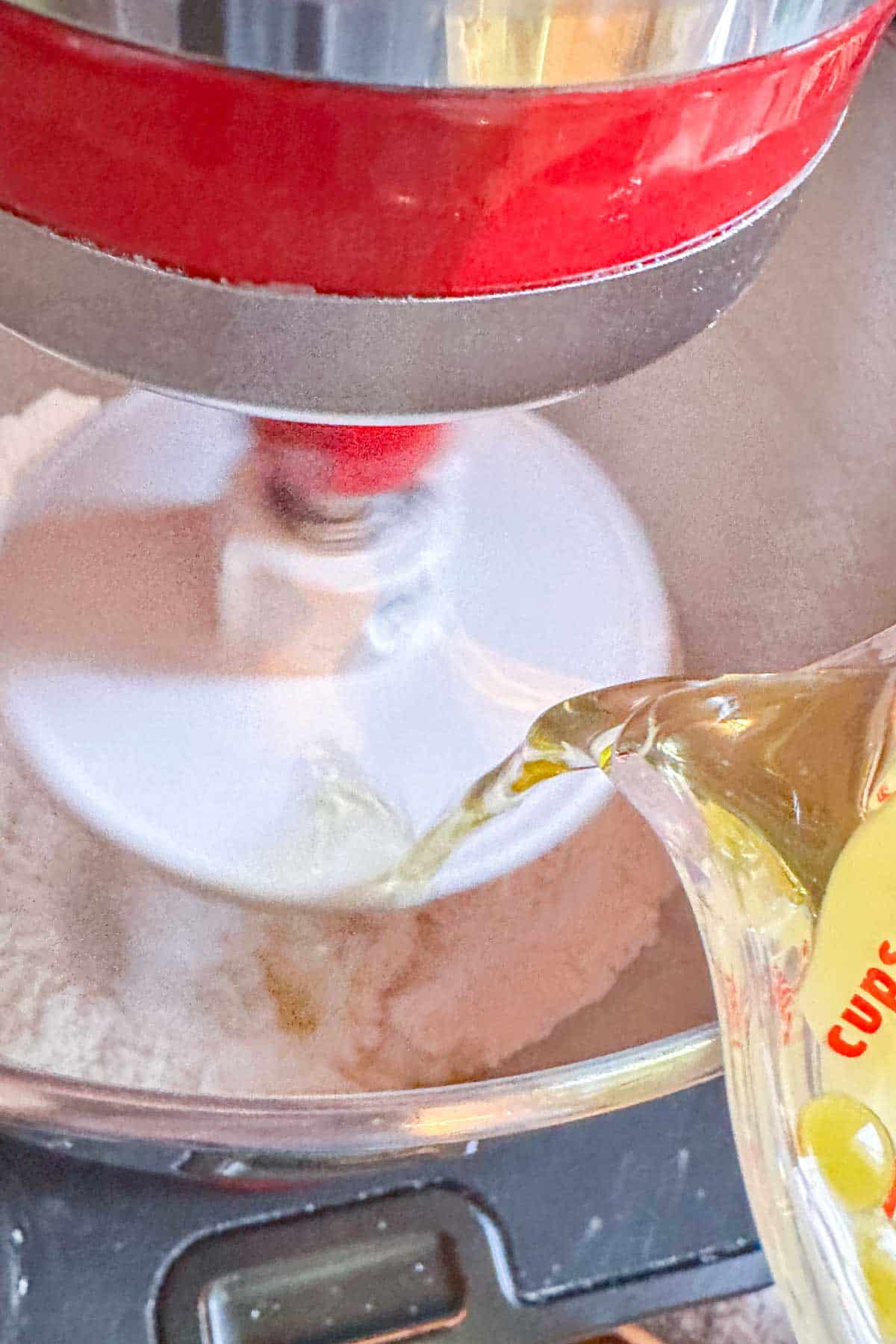
Add the warm water and the oil to the bowl and mix well using a dough whisk or wooden spoon. If using a stand mixer, make sure to pause it a few times to scrape down the sides as needed.
Gradually add the remaining 2 cups of flour, ½ cup at a time, mixing until the dough starts to “clean” the sides of the bowl.
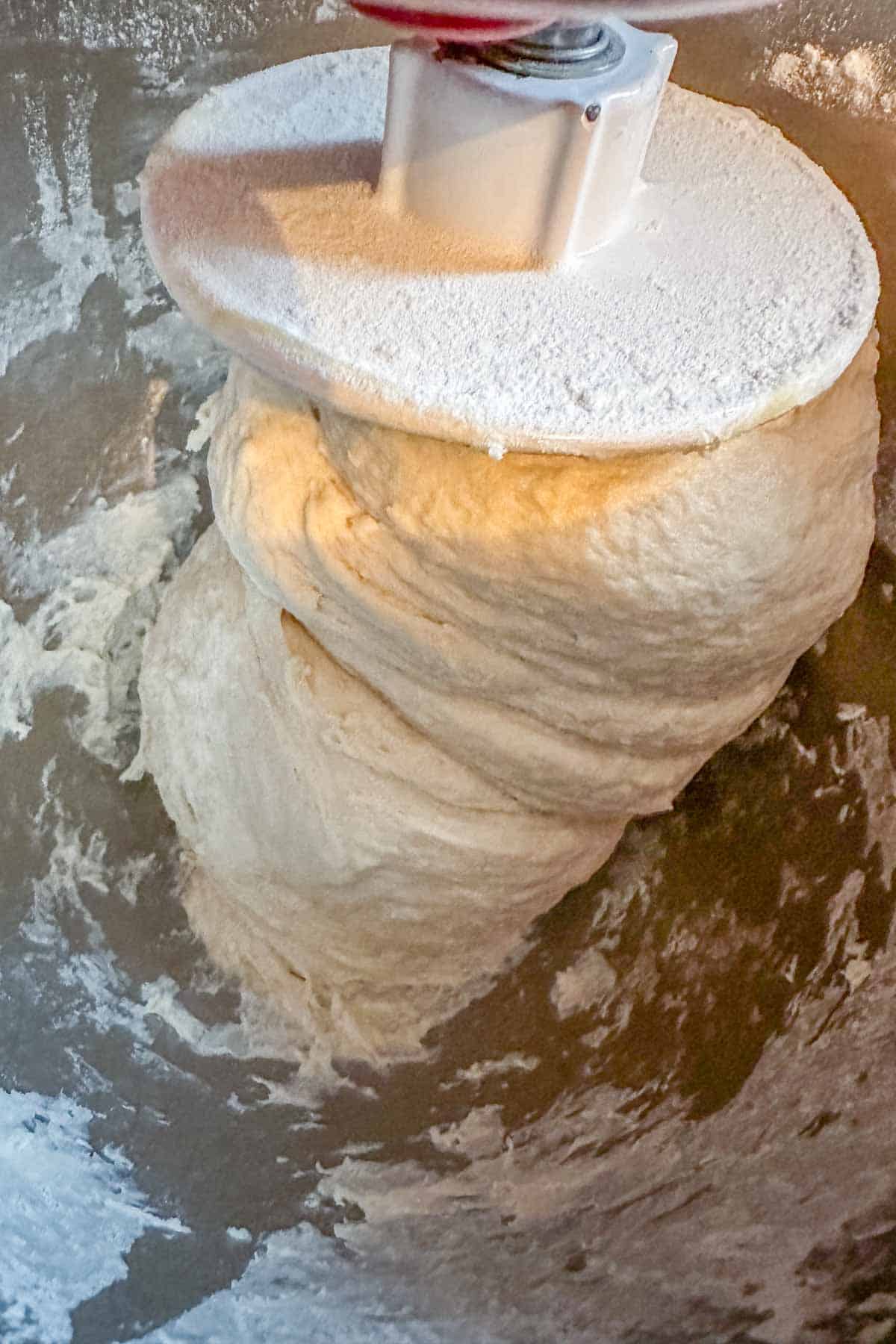
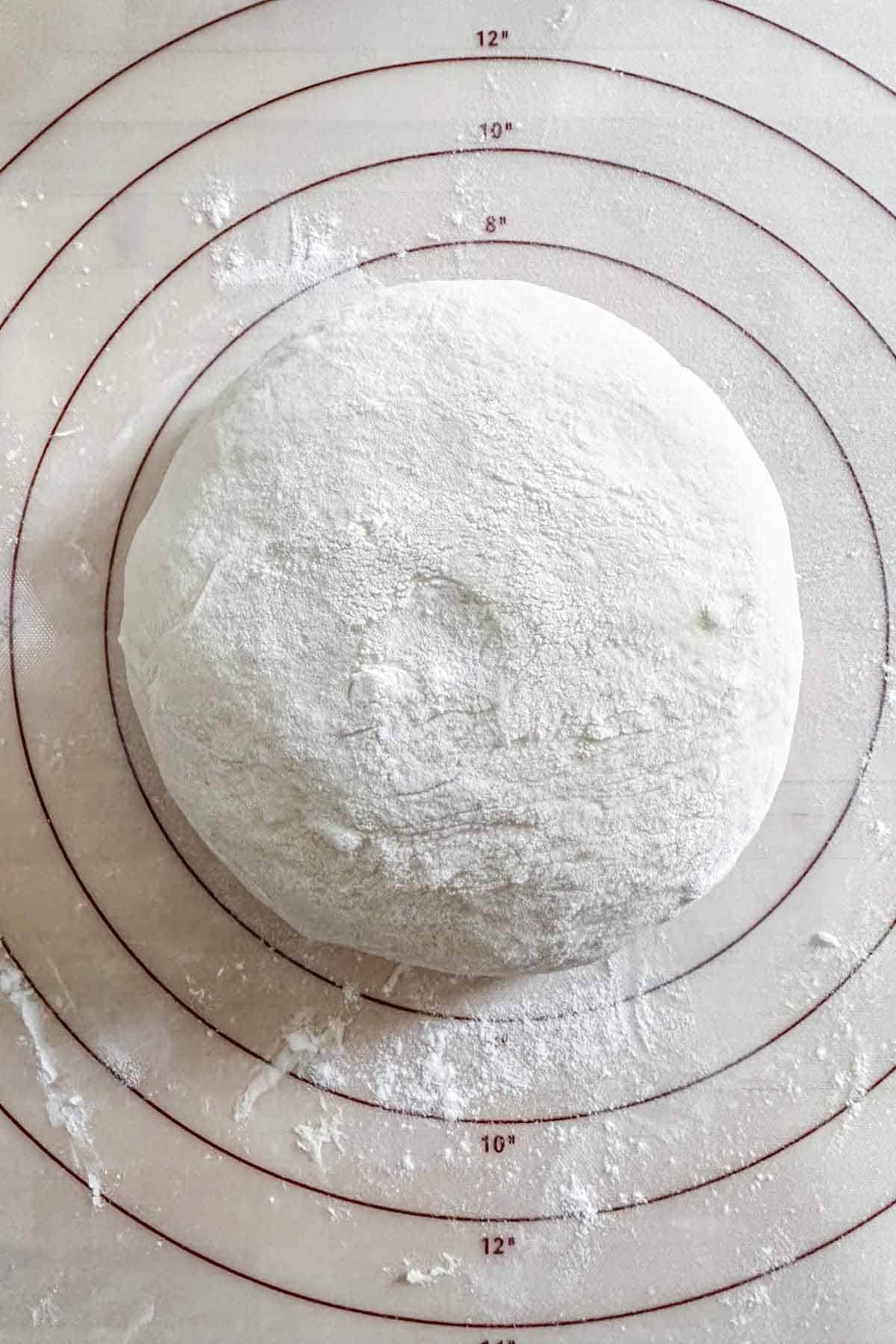
Knead by hand until the dough is smooth. If needed, add more flour, but only enough to prevent sticking; the dough should be tacky but not excessively sticky.
tip
Bread making is affected by many different factors, from the flour you use to the humidity in your kitchen. Be patient when adding flour and go by how the dough feels rather than the measuring cup or scale.
Coat the inside of a bowl with nonstick spray or a small amount of olive oil. Shape the dough into a ball and place into the bowl, turning to coat on all sides.
Cover the bowl with a clean kitchen towel, plastic wrap, or a shower cap, and set in a warm place to rise for 1 hour.
Once risen, deflate the dough and divide in half.
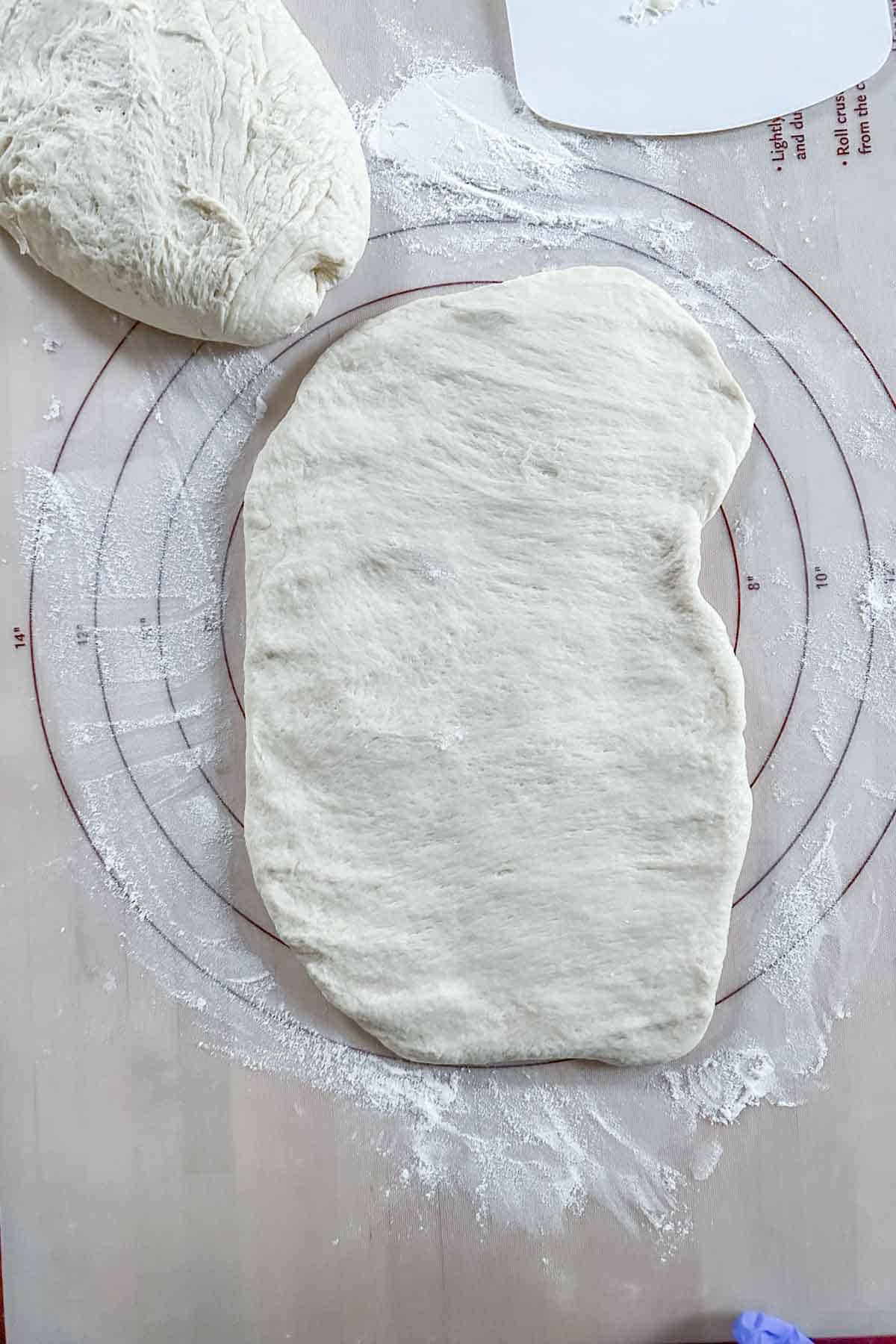
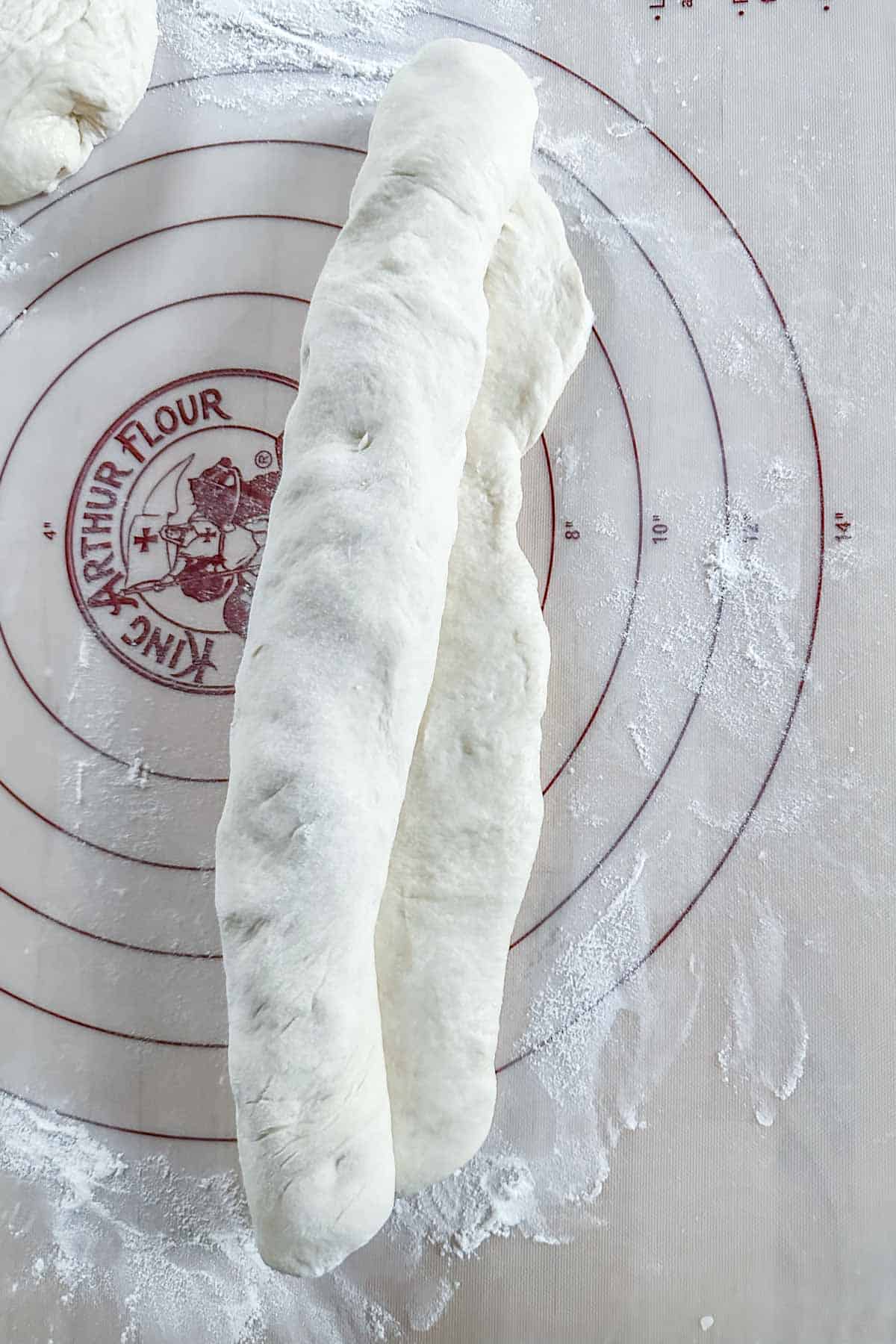
Take one half and gently press into a rectangle 12-15 inches in length. Roll up from the long side, fold in the ends slightly, and pinch seams together to seal.
Set the loaf on a lined baking sheet and repeat with the remaining dough.
I prefer to use two baking sheets to give the bread space to rise, but you can put both loaves on one baking sheet if you like.
Cover with a kitchen towel and let rise again for 30 minutes to 1 hour.
While the bread is rising, preheat the oven to 375°F.
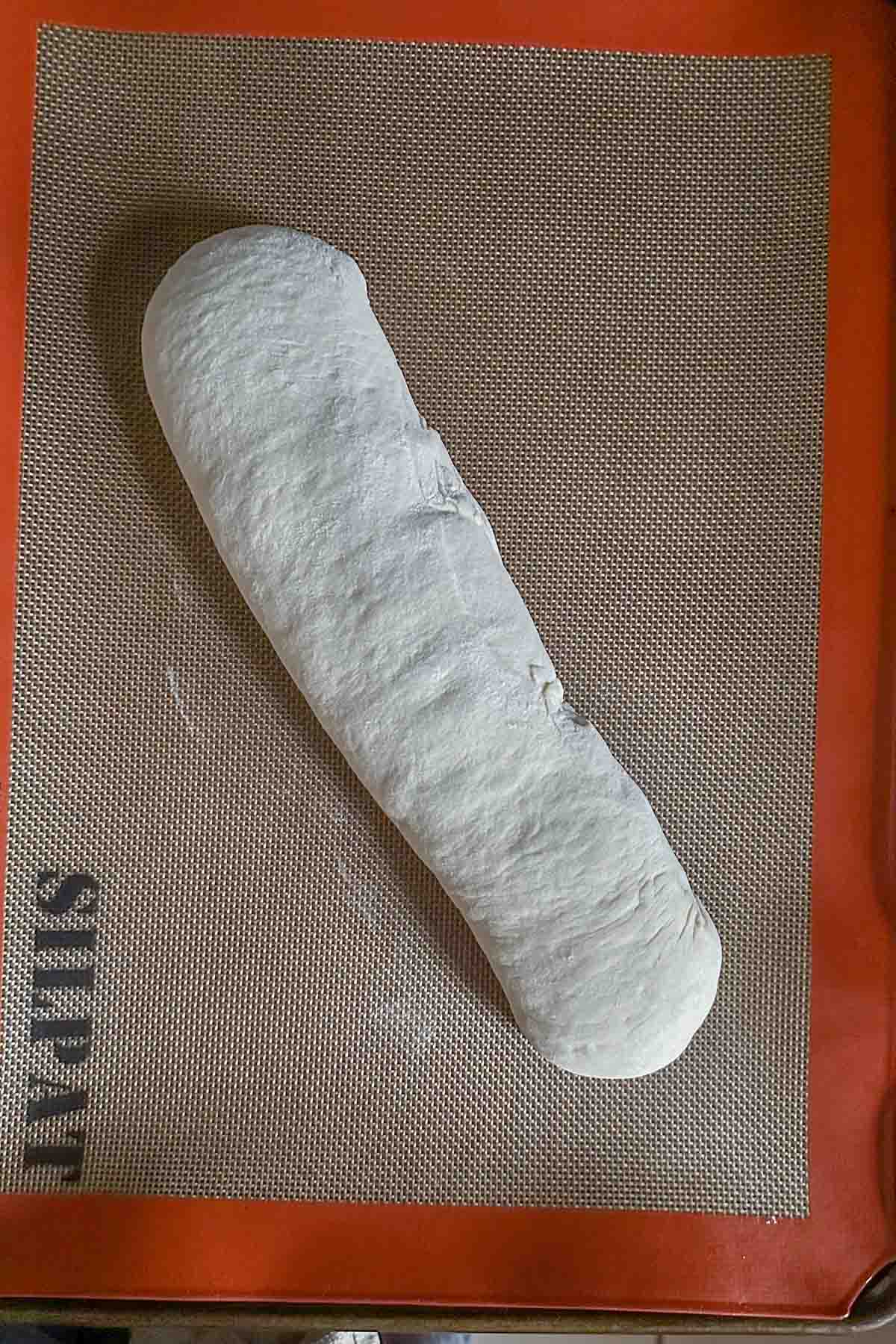
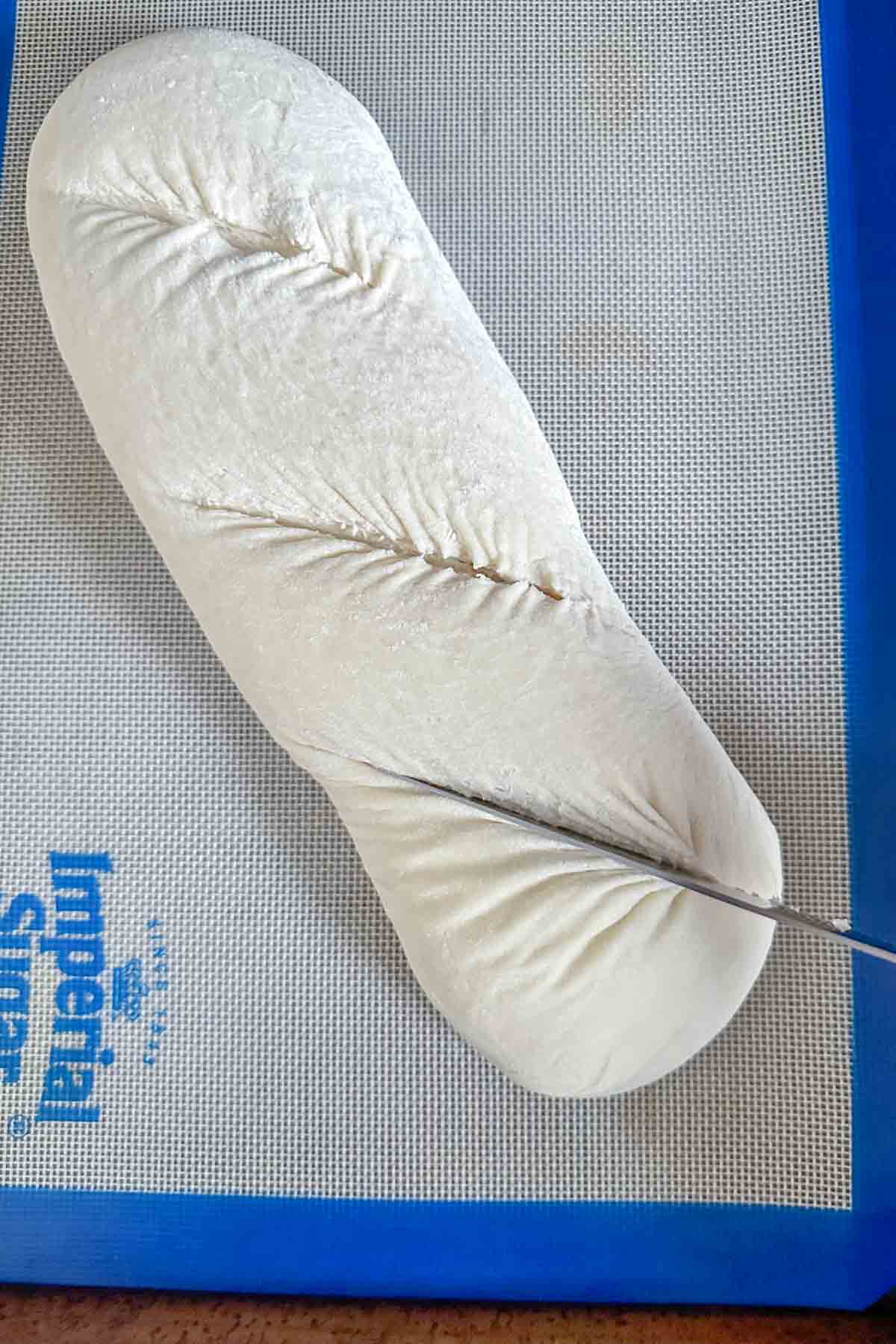
When ready to bake, use a serrated knife to cut 3 or 4 slashes diagonally across the top of each loaf.
Place the pans in the oven and bake for 25-30 minutes, until golden brown on top.
The bottoms of the bread should sound hollow when knocked on, or you can use an instant-read thermometer to test for doneness. The bread is fully baked at 190°F to 210°F.
Transfer the loaves to a wire rack to cool.
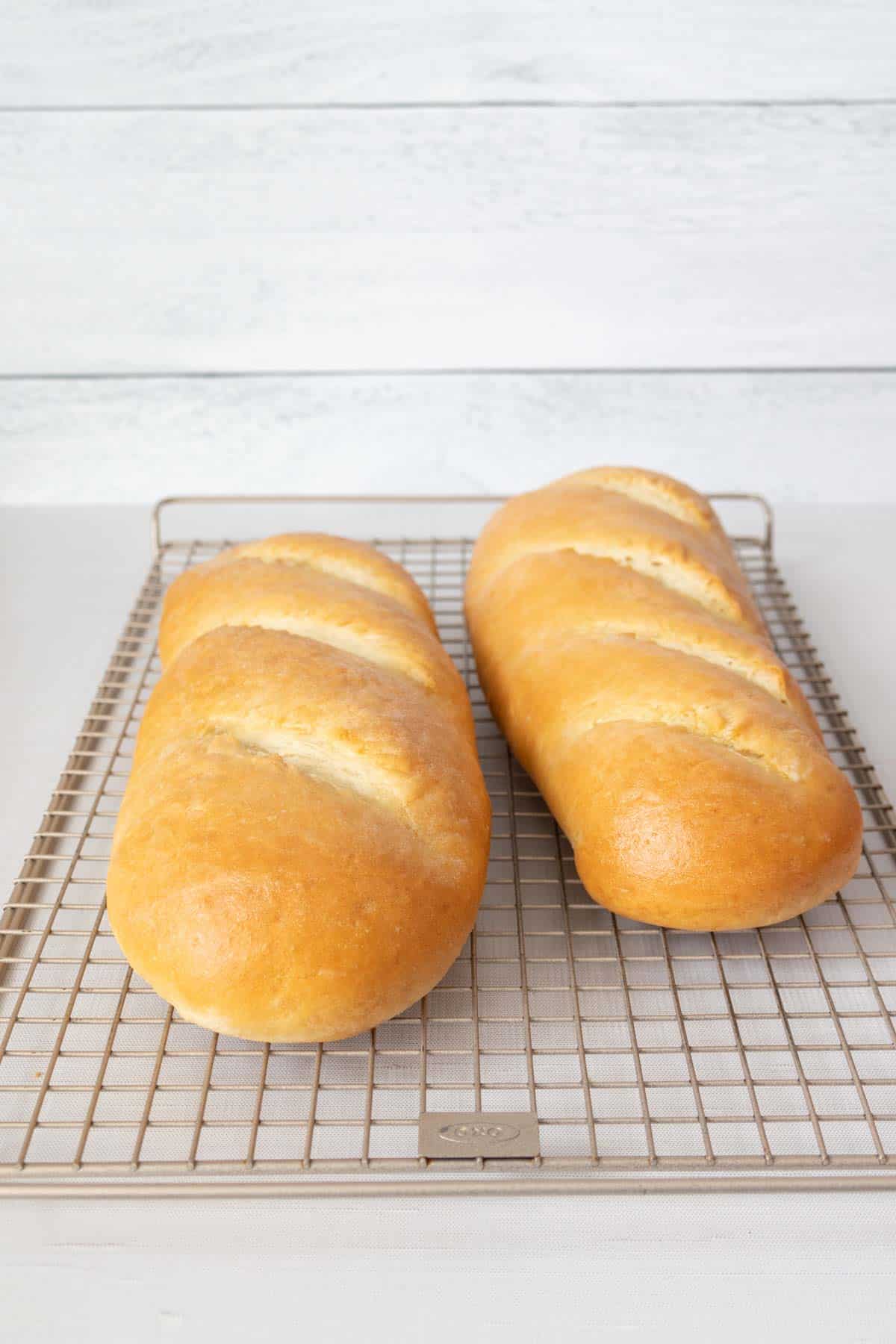
If you like, brush the bread with butter to give it a sheen and bring out the color. Note that this will soften the crust, so if you prefer a crisp crust, skip this step.
Once the bread has cooled, slice and enjoy!
Storage tips
Homemade French bread will keep at room temperature for about 3 days. If you need to store it longer, place the bread in the refrigerator.
I store my bread in plastic bread bags closed with a twist-tie or bag clip.
Because homemade bread does not have as many preservatives as grocery store bread, make sure to eat it before any mold spots show.
Once the bread is moldy, discard it. Do not be tempted to just rip off the mold spots and eat the rest!
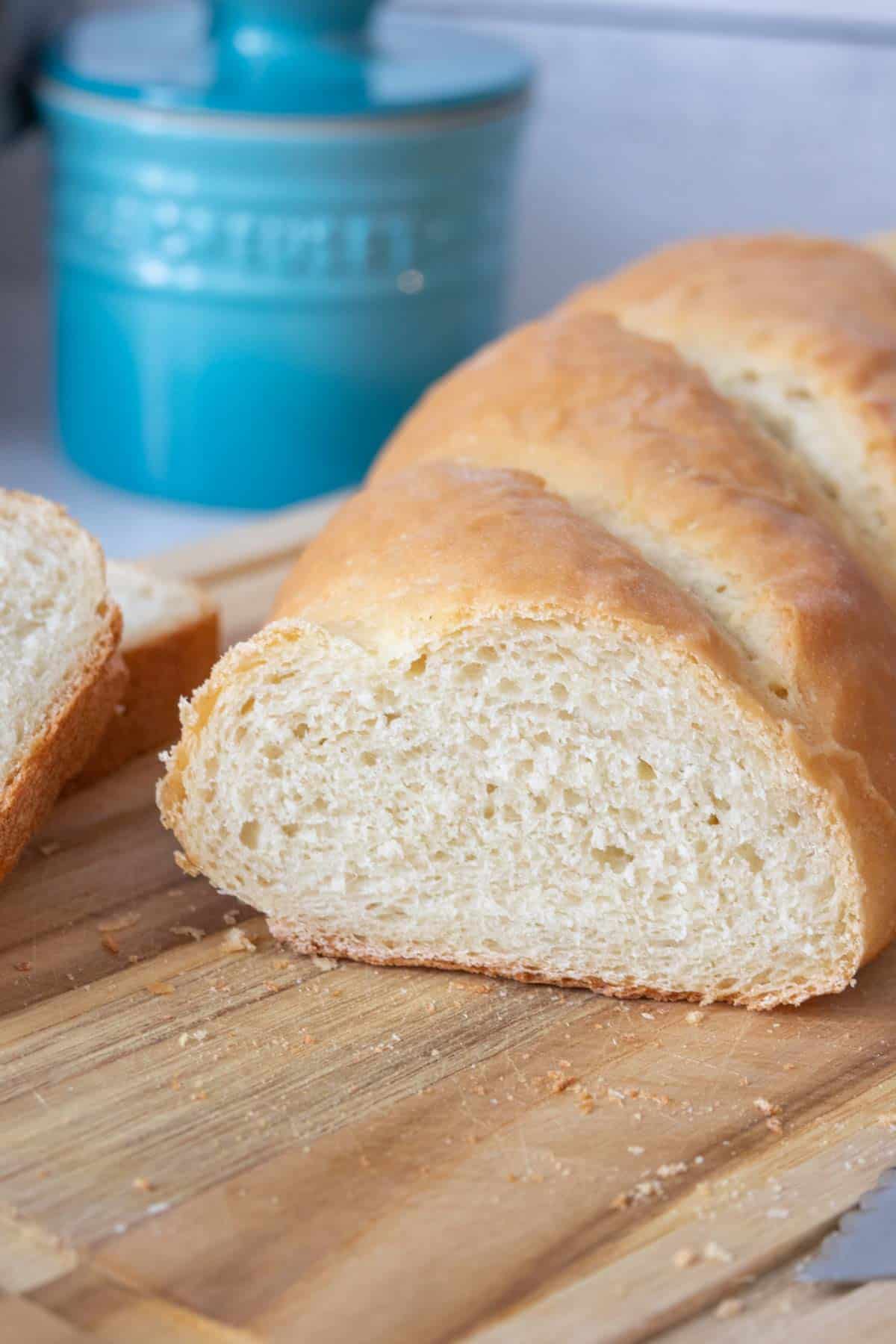
How to freeze French bread
For longer storage, you can freeze the loaves. This is what I do when we don’t have immediate plans for the second loaf.
First, let the bread cool completely. Then, wrap it tightly in foil or freezer paper, and place in a freezer bag.
Label the bag with the contents and date, and freeze for up to 6 months.
To thaw, simply place in the refrigerator the night before.
Serving suggestions
We love to eat French bread sliced and spread with butter, or dipped into soups or chili.
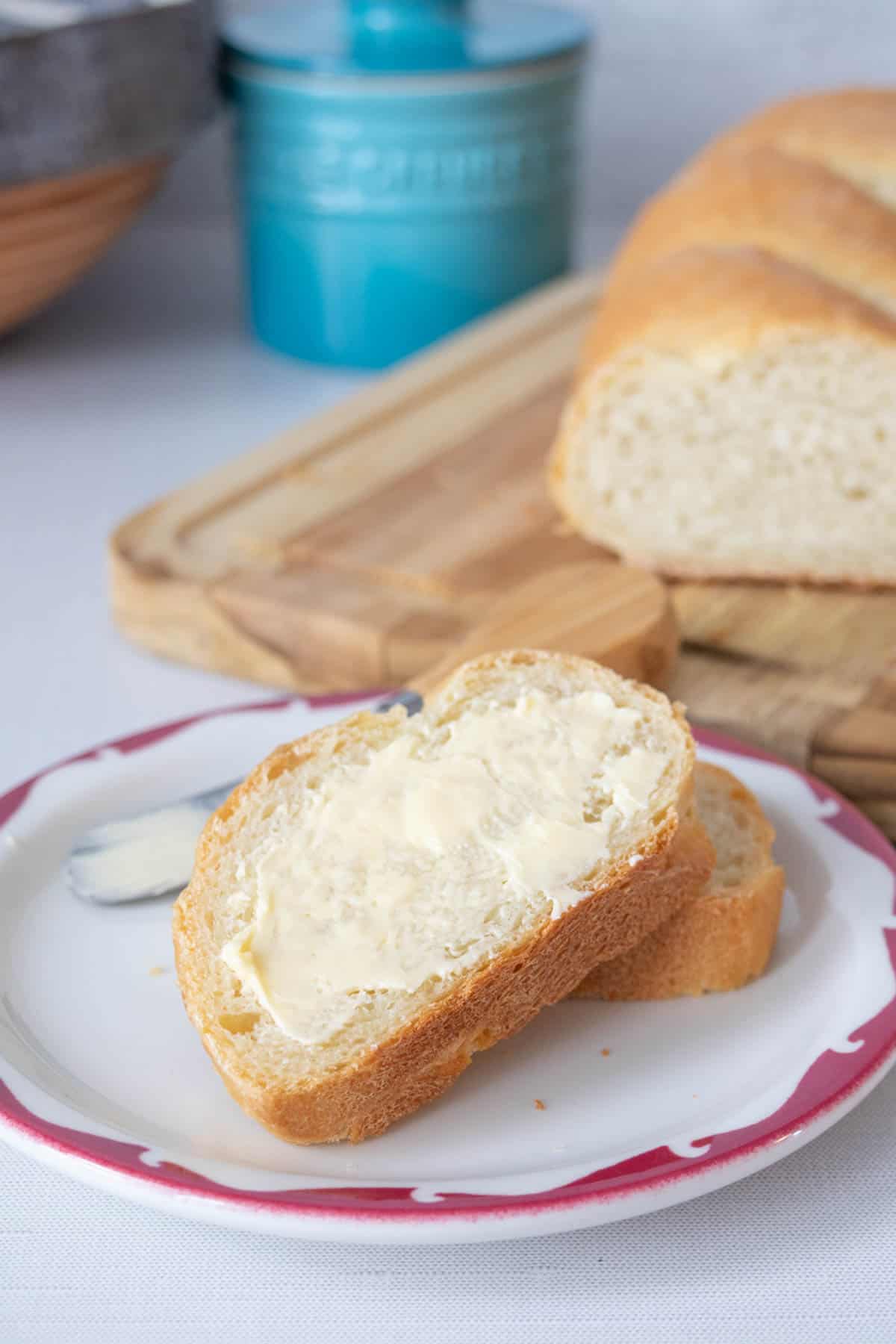
You can slice the loaves in half lengthwise and use for making homemade garlic bread, French bread pizza, or even egg boats.
Any bread that goes uneaten can be turned into croutons, used for making french toast casserole, or blitzed into breadcrumbs.
Ready to try more bread recipes? Check out this flavorful cheesy sourdough bread!
However you enjoy it, this easy French bread recipe will definitely be a hit!
Love this recipe? Please leave a 5-star review below!
It means so much when you enjoy my recipes, so let me know how it goes and leave a comment if you have any questions.
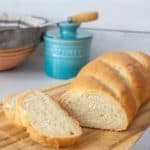
French Bread
Ingredients
- 5 cups all-purpose flour, divided use, plus more as needed
- 1 tablespoon granulated sugar
- 1 tablespoon instant yeast
- 2 teaspoons fine sea salt
- 2 cups warm water
- 2 tablespoons olive oil
Instructions
- In a large bowl or bowl of a stand mixer fitted with dough hook, mix together 3 cups flour, sugar, yeast, and salt. Pour in water and oil and mix to create a wet dough.
- Mix in flour ½ cup at a time, until dough cleans the sides of the bowl and is no longer excessively sticky. Knead a few minutes until smooth, adding flour just to prevent sticking. Dough should feel tacky.
- Lightly grease a bowl with nonstick spray or olive oil. Shape dough into a ball and place in bowl, turning to coat. Cover with a kitchen towel, plastic wrap, or plastic shower cap and let rise in a warm place for 1 hour.
- Deflate dough and divide into two pieces. Pat dough piece into a rectangle 12-15 inches in length. Roll up from the long edge, then tuck in sides, and pinch seams together to seal. Set on a baking sheet and repeat with remaining dough. Cover with a kitchen towel and let rise 1 hour.
- Meanwhile, preheat oven to 375°F.
- When ready to bake, use a serrated knife to slash the tops of the bread. Place bread in oven and bake for 25-30 minutes, until tops are golden and knocking on the bottom produces a hollow sound.
- Let cool on a wire rack. If desired, brush with melted butter.
Notes
- Makes 2 loaves.
- If using active dry yeast, dissolve for 5 minutes in warm water before adding to flour.
- An instant-read thermometer will show the bread as fully baked at 190°F-210°F.
Recommended Products
Nutrition
Nutrition information is provided as a courtesy and is an estimate based on online calculators. Any nutritional information found on Stetted should be used as a general guideline only.

About Megan
I learned how to cook by exploring seasonal ingredients, and you can too! Meal time shouldn’t be stressful or complicated, and with fresh ingredients and easy methods, I’m here to help you enjoy the time spent in the kitchen. Read more…


